15 Benefits of Clinical Reformer Pilates Training
Hey! I'm Physio Ellen
Sharing the joys of Clinical Pilates with my clients is what keeps me fueled.
It would be my pleasure to show you the ins and outs so your own clients can benefit, too.
Grab my free Reformer Rehab Integration Guide
March 8, 2025
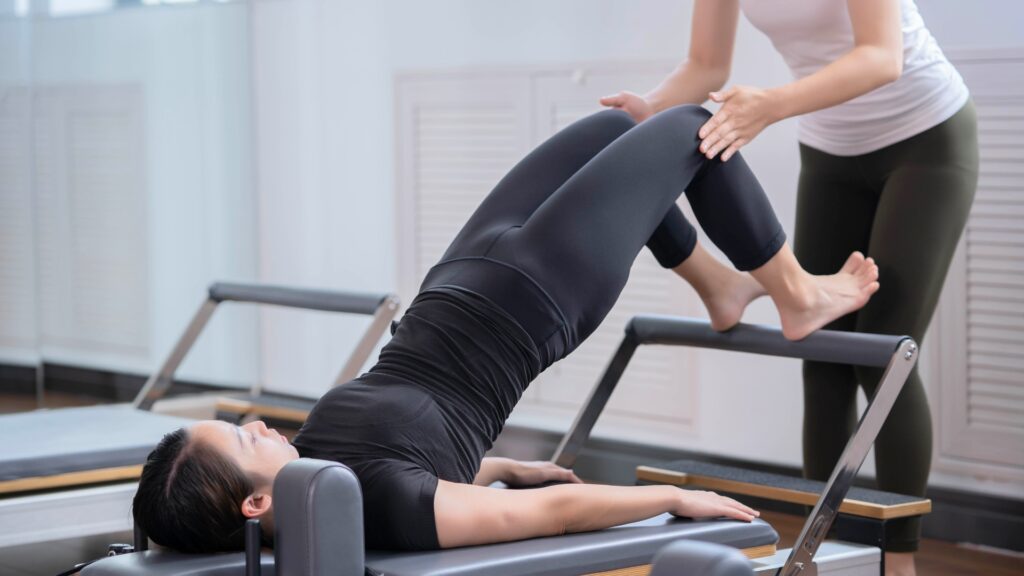
It’s hard to deny that there are many benefits of Reformer Pilates training. It’s become increasingly popular, in both the fitness and rehab spaces. More people have been catching onto the joys of Reformer work, and as a physio and certified Pilates Instructor, I’ve been a big fan for a long time.
People usually rave about getting a full body workout that targets strength and flexibility, but Pilates offers so much more from a rehab perspetive.
Perhaps you’ve been thinking about completing a Pilates certification or teacher training course and you’d like to learn more about Reformer certification specifically. I don’t blame you, using a Pilates Reformer to work with both general and special populations has been the most impactful continuing education choice I’ve ever made.
So, in my best effort to pique the minds of as many rehab-minded professionals as possible, here is my complete list of treatment benefits and why you may want to consider Clinical Reformer Pilates training.
Reformer Pilates Benefits
- Closed Chain Strengthening
- Modified Closed Chain Strengthening
- Eccentric Work
- Core Stability
- Motor Control and Motor Learning
- Postural Control
- Balance
- Spinal mobility
- Selective Movement/Isolation
- Proprioception
- Coordination
- Unilateral Focus
- Accessibility
- Treatment Efficiency
- Client Engagement
1) Closed-Chain Strengthening
I don’t need to tell you that closed-chain work can play an important role in a rehab program. However, perhaps you weren’t aware that this is one of the standout features of Reformer Pilates. The way that the apparatus is designed, several fixed surfaces are available. There’s the moving carriage, the Footbar, rails, the Jump board, and of course the floor offer endless possibilities. Add to that the graded spring resistance and you’ve got closed-chain strengthening covered for all ranges and strength levels.
2) Modified Closed-Chain Strengthening
The most common equipment I’ve seen for modified closed-chain work are bands and wall pulleys. While resistance bands are convenient (I give these out to my clients), they don’t provide consistent resistance through range. And wall pulleys? They’re a great alternative and easy to adjust, but almost always, the client is generally in some form of sitting, kneeling, or standing doing upper body work only. With the system of springs and pulleys on the Reformer, you get consistent resistance through range, exercise options for both upper and lower limbs, several positioning choices, and a unique instability stemming from the wobbly nature of the springs (think of a Slinky, back in the day when they were made from metal).
3) Eccentric work
Building on the above, proper Reformer Pilates training is key to diving deep into the eccentric focus of the exercises. Whether you’re targeting inner, outer, or full range, the apparatus makes exercise planning simple and easy. The ability to utilize the Reformer for closed chain and modified closed chain loading also provides clients with valuable feedback compared to open chain work. I find this feedback particularly helpful when working on neuromodulation/downregulation of muscle tone. Overall the Pilates exercises are a great way to improve flexibility and prevent injuries through all the eccentric work.
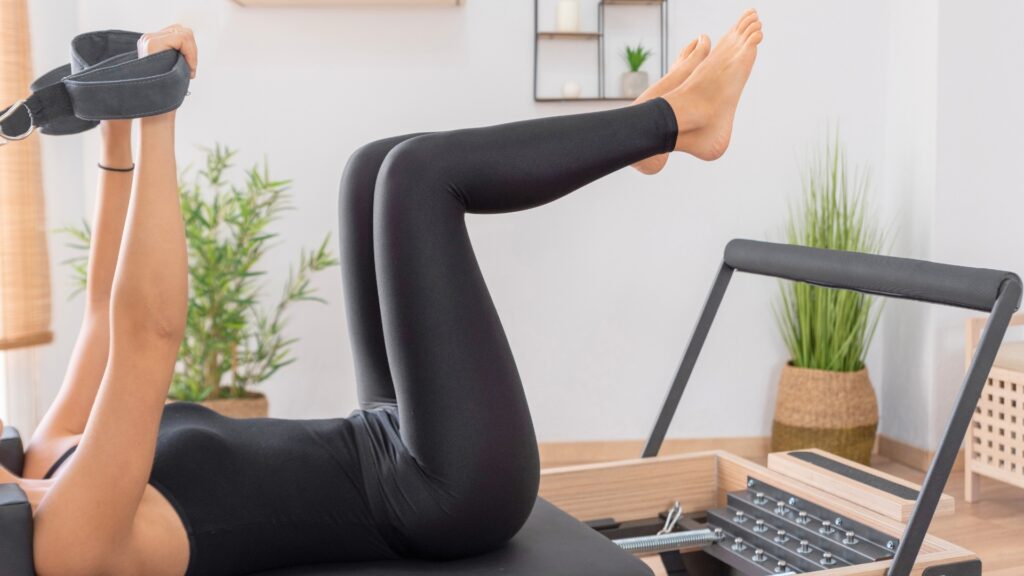
4) Core Stability
It’s no surprise to anyone that core stability is a key feature of Mat Pilates. But the great thing about Reformer Pilates is that it seamlessly integrates core work into almost every exercise. In other words, it makes integration of the trunk and limb(s) super easy, and you don’t necessarily need to worry about addressing the core in isolation. I call this feature ‘Sneaky Core’.
5) Motor Control and Motor Learning
In my opinion, having the option for trunk support is one of the primary benefits of the Reformer. Whether in supine, prone, side lying, or seated, regulation of muscle activation and motor control becomes much easier. Add to this the feedback from closed chain and modified closed-chain movements and you’ve got a highly effective tool. Addressing motor control and motor learning is also why I always recommend learning the classical repertoire when choosing a Reformer Pilates training course; with a lot of novel movements, the choreography itself is inherently valuable.
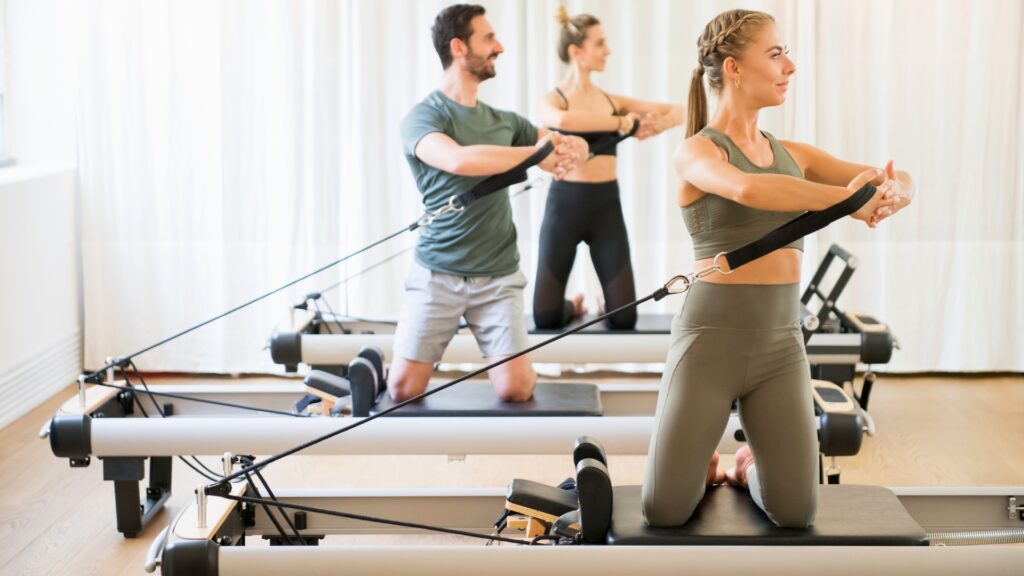
6) Postural control
There is a unique back-and-forth motion of the carriage (platform) that offers a great source of external perturbation for clients no matter what position they are in. This lends itself well when addressing core stability and maintaining neutral alignment while moving. I definitely recommend trying out some Reformer Pilates classes to truly feel and appreciate this feature. My clients often report improved posture with daily activities and better awareness overall.
7) Balance
While it’s popular to think of Pilates as being heavily weighted in Mat work, with a thorough Reformer Pilates training course it becomes obvious that many of the exercises can be tweaked to address balance in sitting, kneeling, or standing. When was the last time you gave a shoulder rehab client a balance exercise? If you’re like me, you spend a lot of time working on the shoulder girdle, but it’s no secret that upper limb injuries affect balance. I get it, time is tight and expectations are high. With the Reformer, you can address both at once.
8) Spinal mobility
Traditional Reformer Pilates training exercises are often multi-planar, especially when it comes to the spine. Additionally, not only is there solid programming for spinal ROM, but closed-chain and modified closed-chain loading just hits differently when compared to open-chain. The feedback from the springs is especially supportive for those with joint hypermobility. Due to the added support, targeting spinal articulation and certain core muscles can be easier. It’s no surpise that Pilates has been proven effective in treating back pain. In conjunction with some Mat exercises and breathwork, I also love using the Reformer to restore lumbar and thoracic mobility in postpartum women.
9) Selective movement/isolation
Speaking of movement isolation, since Reformer exercises generally involve an entire kinetic chain to some degree, it can be a prime opportunity to target just one joint or area. Keeping the trunk supported and reducing load easily are great options to dial into this if it’s a treatment goal. Precision is one of the key movement principles of the Pilates method and therefore likely emphasized in all training programs.
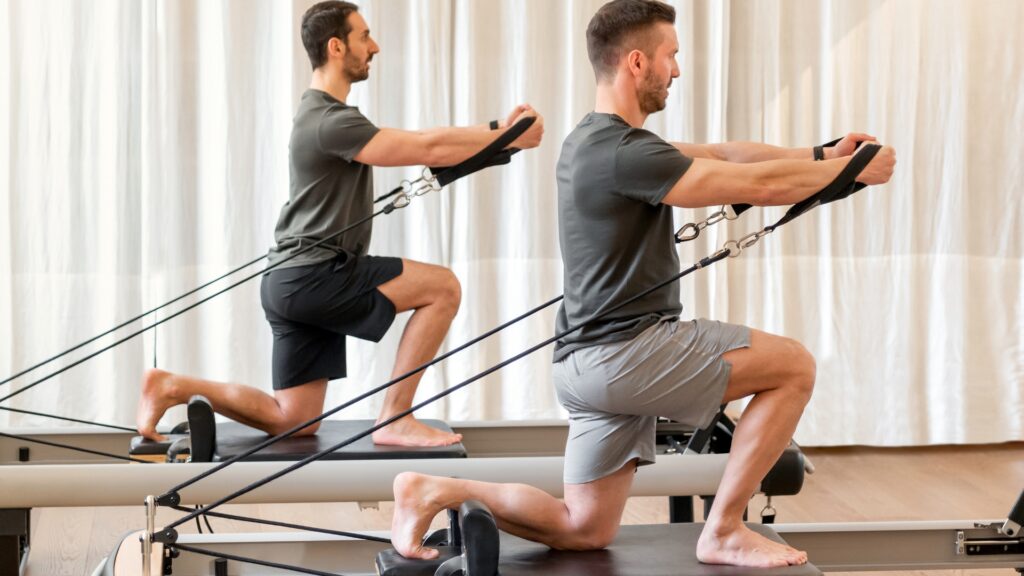
10) Proprioception
Pilates inherently values a lot of precision and controlled movements since Joseph Pilates was influenced by diving and gymnastics when creating his method. With so many of the Reformer Pilates training exercises performed without visual feedback, proprioception is a constant. There is no room for sloppiness or uncontrolled movements. Pilates also stresses the importance of of verbal cues to support proper biomechanics. This long term study supports proprioceptive training in single leg stance for injury prevention. With the implementation of closed chain single leg work, the Reformer offer several forms of exercise that can lead into return to sport quite easily.
11) Coordination
Reformer Pilates training has a strong foundation in dance. This not only leads to coordination challenges for the uninitiated but also moments of humour. It’s even more fun when clients finally accomplish a new exercise, only to have to relearn it all over again on the contralateral side. Coordination is easily overlooked when program planning for non-neuro populations, but it doesn’t have to be. Classical Pilates repertoire introduces new movement patterns at beginner, intermediate, and advanced levels. This is why I recommend a comprehensive program that teaches more than just a handful of exercises over a weekend.
12) Unilateral focus
Many of the Reformer Pilates training exercises are asymmetrical/unilateral which, I feel, offers a lot of therapeutic utility. I often use these exercises as opportunities for assessment while also giving my clients time to move their bodies. Having clients compare their performances between sides also highlights for them any deficits they may have. It’s easy to sense an imbalance whether it’s seeing how far they can/can’t stretch or how they perceive differences in spring tension. One of the benefits of Reformer Pilates is that it’s a gentle form of strength training that often takes into account posture and mind-body connection.
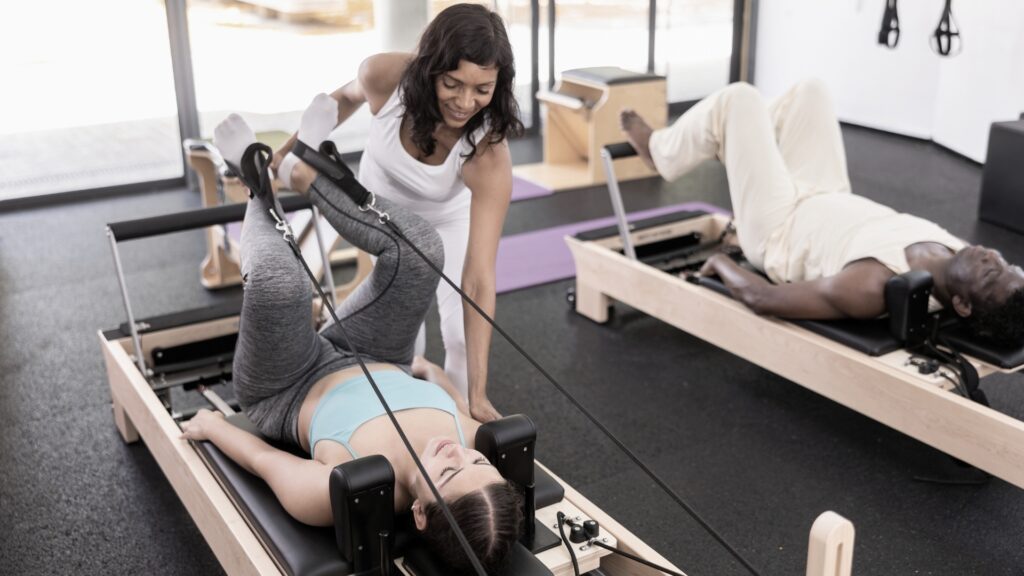
13) Accessibility
Up to this point, you might be thinking that you’ve been able to address all of these goals just fine. But accessibility is where the Reformer shines. Imagine making the most difficult movements/exercises achievable for those in the rudimentary stages of rehab. Being able to do a full range, one-legged squat with progressive loading? Check. How about a handstand push-up? Check. Full range pull-up? Check. And if you’ve got a Tower/Frame attachment for your Reformer, there are even more options for those with limited mobility.
14) Treatment Efficiency
Due to a wide range of exercise positions with whole-body involvement, addressing multiple treatment goals simultaneously becomes a breeze. Possessing a solid base in Reformer Pilates training equips you with endless options. Because if you’re not confident in using the apparatus, you won’t feel as free to get creative. Better still, finding a course that focuses on the therapeutic benefits and considerations of the classical repertoire is a great place to start.
15) Client Engagement
I never grow tired of hearing my clients say “Just let me try it one more time”. There are so few opportunities in our daily lives to explore novel movements. I’ve had clients say the Reformer is like a ‘jungle gym’ or ‘joining the circus’. It’s fun and challenging in ways that we don’t often experience as adults. Bonus points for being low-impact.
Is Reformer Pilates Training Right for You?
So there it is, my ‘why’ for fully investing in Reformer Pilates training. Yes, there are many different types of Pilates equipment and instructor training, but Reformer is a great place to start. If you’re thinking about taking a Clinical Reformer course but you’re still on the fence, my #1 suggestion is to get out and try a Reformer class or workout for yourself. I think you’ll be pleasantly surprised at how you can get a better sense of the smaller muscles in the body. You might even become a Pilates fan like myself. And if you ever find yourself looking for online, self-paced Reformer training, check out my courses here.
leave a comment